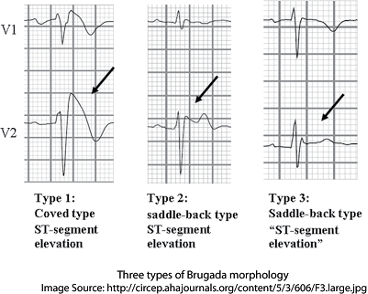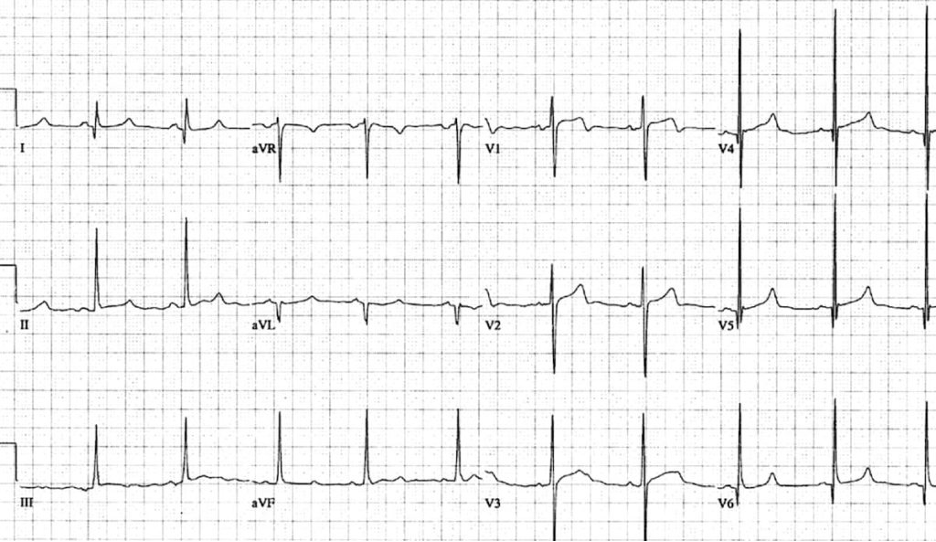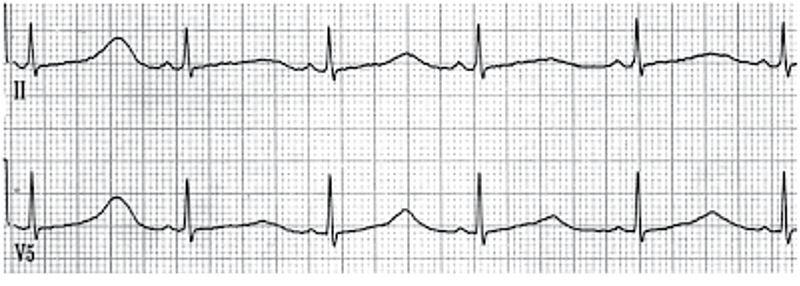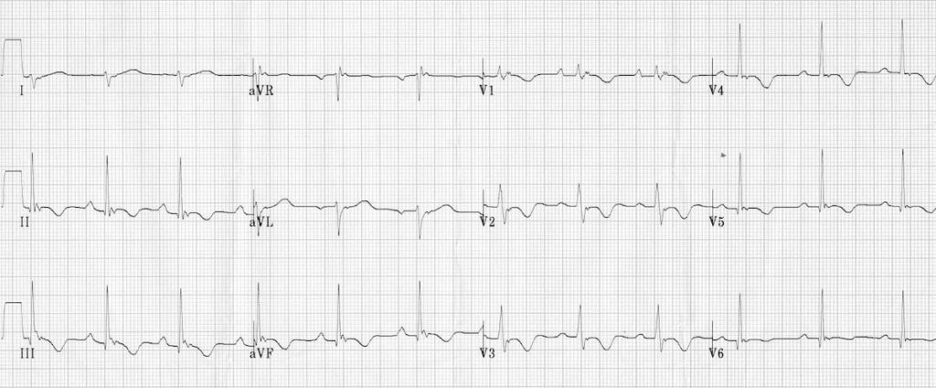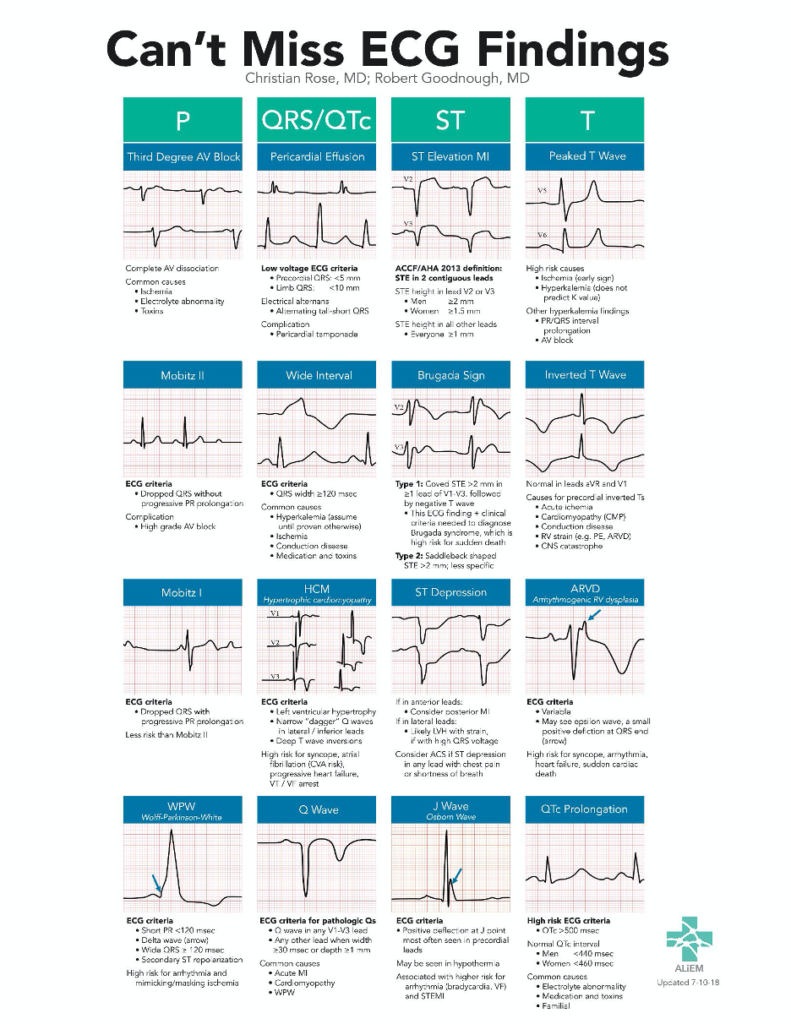Taking the Risk: Anticoagulation and Low Risk PE in the ED
Pauline Thiemann, Pharm D
-50% of patients with PE can be safely treated at home-Recommend outpatient management for patients with low risk PE
-Low risk: hemodynamically stable, low Risk Scores (HESTIA Criteria, PESI score, S-PESI), no RV dysfunction and negative troponin
-then see if the patient has any contraindications to Anticoagulation
– HAS-BLED score
-IV therapy: Unfractionated heparin
-immediate onset and half-life is 1-2 hours. Easy turn on and off
-dosing: VET Protocol 80 u/kg bolus 16 u/kg/hr
-Severe renal dysfunction
-Reversable
-Cons: Hx of HITT, not for outpatient, not fast time to therapeutic PTT
-Subq: Lovenox
– onset: 3-5 hours and ½ life 4-7 hours
-eliminated by renal
-Dosing: 1mg/kg q12h (preferred), Renal dysfunction 1 mg/kg daily
-Reversible with protamine
-Cons: HIT, Subq injection (need patient education), not studied in dialysis patients
-Oral Agents
-Warfarin:
-5mg a daily or 2.5 mg daily in HF, elderly, liver failure, malnourishment
-INR based dosing (goal is 2-3)
– Keep Vitamin K intake consistent week to week
– patient needs INR checks (think if patient can do that and has access to care)
– tell physician/pharmacist anytime a change in medication.
-Reversable: PCC or FFP (+vitamin K)
-Bridge: VTE/PE ALWAYS BRIDGE
-Pradaxa: Direct thrombin inhibitor
-requires 5 days of initial therapy before starting
-Caution with liver disease
-cannot send home directly
-Reversible: Praxibind
-Savaysa (Edoxaban)
-Same as pradaxa: need to be on 5 days of parenteral anticoagulation
-watch in creatinine also (very specific)
-good for cancer patients
-reversible: PCC
-Xarelto: Factor Xa inhibitor
– Reversal: PCC
-Dosing: 3 week loading dose (15 mg BID x 21 days) and then 20mg daily with a meal
-Avoid in kidney and liver dysfunction
– patients cannot miss doses
-Eliquis: Factor Xa inhibitor
-10mg BID x 7 days and then 5mg BID after
– no renal dose adjustments needed
– can be taken with or without meals, less rates of major and minor bleeding
– Reversible with PCC
– patients cannot miss doses
-Writing the Script:
-Apixaban 5mg tablets, directions: take 2 tablets twice daily for 7 days and then take 1 tablet BID after. Qty: 74 tablets
–DOACS are contraindicated with Phenytoin
Small Group PE
Becca Leavitt, MD PGY-2
CASE 1
Patient is a 16 YOF with PMH of seasonal allergies who presents to your ER with a 1 day history of intermittent shortness of air at rest. She denies cough and fever or recent known COVID contacts, but adds that she just came back from a week-long cross-country road trip with her boyfriend. She takes an OCP every day, which she just started after having a Nexplanon removed 3 months prior. She does not smoke cigarettes, but does endorse occasional marijuana use. Her physical examination and vitals are grossly normal barring a heartrate of 120 BPM.
- What are the components of the PERC score and what are some exclusion criteria?
- Components: Age <50, pulse <100, O2 >or = 95%, hemoptysis, hormone use, surgery/trauma in 4 wees, prior VTE, unilateral leg swelling, cancer
- Inclusion Criteria: Tachycardia, Hormone Use:
- Exclusion: age, no leg swelling, trauma, history of blood clots
- What are common abnormalities seen on CXR in acute PE?
- Hamptons Hump(wedge infarct) Westermarks Sign, ATX, Pleural Effusion, elevation of hemidiaphragm
- Pallas sign: enlargement of descending pulmonary artery
- Other than CT, what are other modalities that can be used in the diagnosis of acute PE and how useful are they
- US (McConnel’s Sign-ECHO) Bilateral lower extremity US, VQ, CXR, EKG (d dimer)
- Dimer: if pretest probability for PE is low. False negative rate is <1%. Dimer levels naturally increase with age (age adjusted age x 10). If it comes back positive then further testing should be undertaken.
- VQ scan: only if there is an absolute contraindication to CT, if there is an abnormal CXR the VQ scan is going to be abnormal. Normal means the patient does not have a PE.
- ECHO: New right heart strain or thrombus in PA
- CTA PE: gold standard for diagnosis of PE
CASE 2
Patient 63-year-old African American man, with a background of poorly controlled diabetes mellitus type 2 and hypertension presented with 1-week history of dyspnoea on exertion. A week before he was hospitalised at another facility with severe hyperglycaemia after running out of his oral diabetes medications. During that hospitalisation, he developed a new-onset breathing difficulty. Ventilation/perfusion lung scan done at that time was indeterminate probability for PE and no further work up was pursued. After hospital discharge, his shortness of breath progressively got worse along with increasing fatigue. He denies leg swelling or pain, chest pain, palpitations, haemoptysis, light-headedness or syncope. Physical examination reveals an anxious man who is dyspnoeic with minimal exertion. He is afebrile, heart rate was 82 beats/min, blood pressure 129/89 mm Hg and respiratory rate 24 breaths/min. The patient was hypoxaemic on room air (oxygen sats 84%) requiring high-flow oxygen through a non-rebreather mask.
- What differentiates massive from sub-massive PE?
- Massive: Right heart strain, and HD instability, pulselessness, arrhythmia, LV dysfunction
- Submassive: without hypotension but with RV strain. Elevation of BNP >90 or ProBNP>500
- What are common EKG changes associated with pulmonary embolism?
- Tachycardia (44%) , Peaked P waves, RBBB (associated with increased mortality if new), Inverted T waves in V1-V4, S1Q3T3, nonspecific ST/T wave changes, RAD
- What are the absolute and relative contraindications for TPA?
- Absolute, previous headache bleed, surgery encroaching the spine, Ischemic stroke in 3 months, intracranial neoplasm, known AVM, concern for aortic dissection, active or bleeding diathesis, recent closed head/facial fracture
- Relative: 75 years, current anticoagulation/ PE in pregnancy, noncompressible vascular punctures, Recent CPR lasting >10 minutes, recent internal bleeding 2-4 Weekes ago, poorly controlled HTN, uncontrolled HTN on presentation, major surgery in 3 weeks, dementia
CASE 3
Patient is a 35 YO Amish male with no significant past medical history who presented to a community ED following collapse. Per his wife, patient was working in the yard, when one of her sons came to alert her that her husband had collapsed while he was lifting logs onto a cart. On presentation, patient is hypotensive, tachycardic, diaphoretic and appears anxious. He relays that he is having difficulty breathing. Fluids are initiated; however, patient remains persistently hypotensive despite 30ml/kg fluid bolus. Lab work is remarkable to for troponin of .12ng/ml, lactic acid 4 mg/dl, WCC elevated to 17, CMP is unremarkable.
- What echocardiographic findings are seen in acute pulmonary embolism?
- McConnel’s Sign (RV free wall hypokinesis), RV dilation, D sign (bowing of the septum), right hear thrombus
- What is the indication for medical thrombolysis in the management of acute PE?
- HD instability, arrest, massive PE,
- Relative: stable PE with evidence of new RV dysfunction, morbid clot burden, new or worsening pulmonary HTN, Presence of extensive DVT
- 50mg/2hr for submassive PE
- Cardiac Arrest: 50mg/1 minute with CPR continued for 30-60 min after push
PE in Pregnancy
-Start with compressive US in bilateral lower extremities
– obtain CXR: if abnormal discuss with the patient about CT Scanning
-Adjusted D Dimers for pregnancy
-Pregnant patients were excluded in PERC rule
Cerner Fun
Dr. Shoff
Helpful tips:
-November 13-14: Jewish hospitals will change to ULH Cerner – you will be able to see their records (whole system by January)
-make about 80% and you can see more patients and most of the patients
-labs will turn red: if they should have been back but is not (but if solid red then critical lab)
-Radiology: when finalized readings and you read it a paper shows up (once you have read then then the paper goes away)
-now shows MEWS scores
Orders:
-Quick orders: click the lab button and without going into tabs you can order
-Set up Favorites folder (name the folder LP Lab, LP Rad, LP Med) and then add to favorites then you will be able to order labs using the quick orders.
Outside records (in the patient’s chart)
-you can see EPIC and CERNER documents from outside hospitals
-Norton, Baptist, or ULH hospitals
PNED : Equivalent
Check out button (top right next to search bar)
Pick the hours (12 hours)
You can click custom: you can see a week at a time.
Patients without a dispo will not appear in check out
Can also go to Message center and look under saved documents (you must open a note, and take over scribed notes)
Monthly Review
Dr. Shaw
FB esophagus: foreword facing coin
Epiglottitis: thumb print sign, unvaccinated, OR an emergent ENT consult
Septic emboli: admit for endocarditis
Massive PE: Deep Inverted T waves (acute right heart strain) will have HD instability. tPA systemic (boards answer)
Small left Pneumothorax with HDS: observation O2 stable is <20% <3cm apex), Observation for 6 hours
Pulmonary Edema: B lines > or equal to 3
Pneumomediastinum: “crunch” causes: asthma exacerbations, choking/coughing, vomiting and drug use. Conservative treatment that is self-limited. Avoid increase in pulmonary pressure (Valsalva) Can discharge if HDS or signs of tension
Legionella: Hyponatremia, diarrhea, associated with fresh water, HVAC repair, NH, can transmit through ventilation systems
Contraindication to BIPAP in acute severe asthma: AMS (weight risk vs benefit), significant secretions, inability to form a seal
Asthma treatment: Albuterol/Ipratropium/steroidsMagnesiumEPI/NIPPVintubation
Tension Pneumothorax: Needle Decompression (due to tracheal deviation, JVD, and HD unstable)
Midclavicular: average depth of 4.28 cm (too long for 16 g IV)
Anterior Axillary: 3.42 cm
Most common cause of death in massive hemoptysis: Hypoxia/Asphyxiation. >100-600 cc/24 hr. Early intubation, mainstem good lung if possible, bad lung down, and IR or bronchoscopy. You can use a Boogie to mainstem the left or right lung
Croup: racemic Epi (stridor at rest) decadone PO if no strider at rest
![Room9er ["Room Niner"]:](https://room9er.com/wp-content/uploads/2020/03/cropped-Screen-Shot-2020-03-08-at-3.16.16-PM.png)



